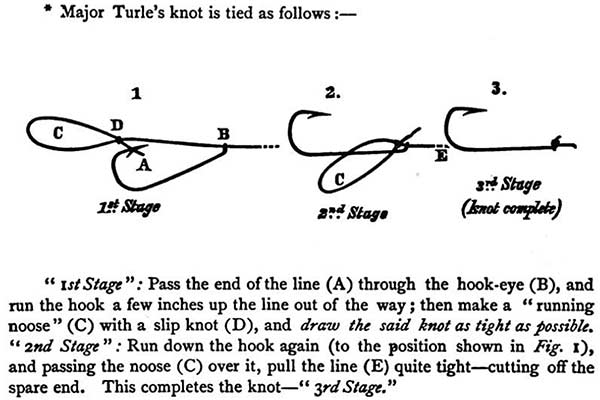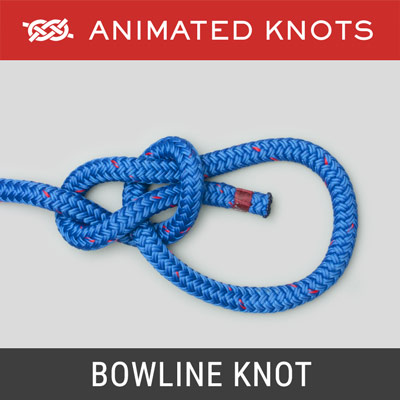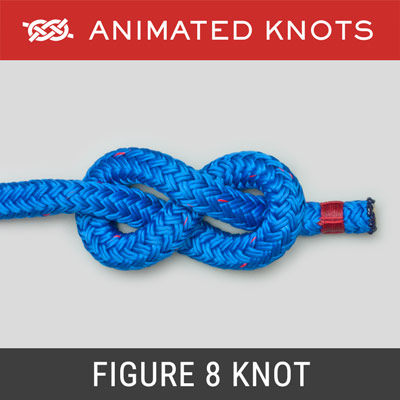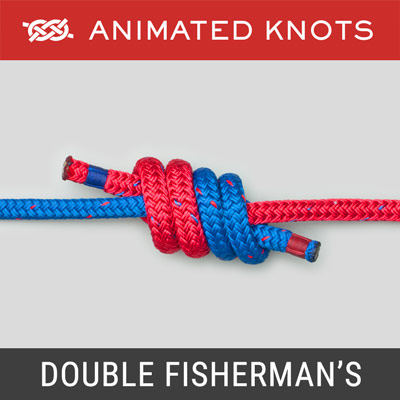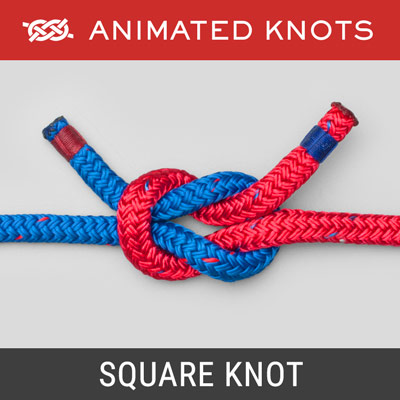Simple knot used to tie a hook or fly to a leader.
Double Turle Knot
Simple knot used to tie a hook or fly to a leader.
 |  |
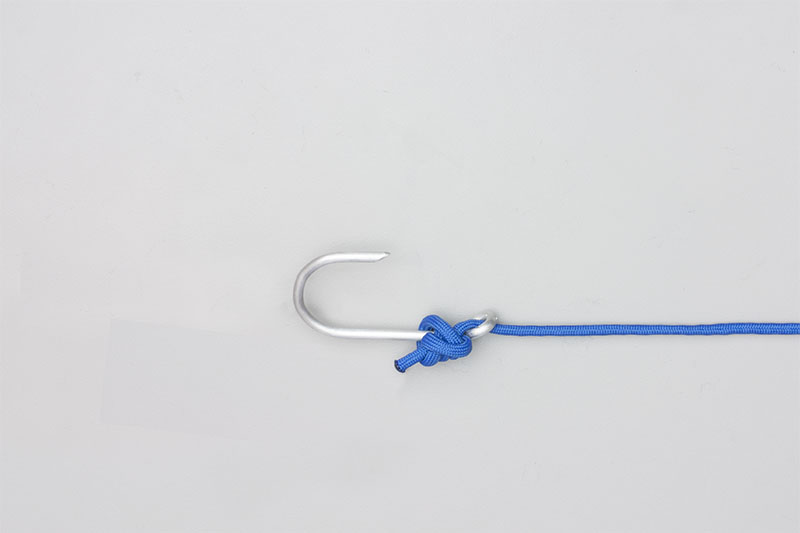
 |  |  |  |  |
To Step use Arrow Keys (
Origin: British Major William Greer Turle popularized the original version of the Double Turle Knot in the late 1800s. However, according to some accounts Turle himself did not claim to have invented it.
Early History: Nevertheless, in Modern Improvements in Fishing Tackle and Fish Hooks (1886 Edition P.20) Cholmondeley-Pennell said that “……he had been in the habit of using a very ingenious knot invented by Major Turle, and known under his name. Attached to the turn-down eyed hook it answers excellently well, as I can testify from experience, having used nothing else for many weeks in sea and river fishing.“
However, by 2006, his enthusiasm for the Turle had been superseded by the Half-Hitch Jam. In “Fishing. With contributions from other authors. Salmon and trout.” he wrote that the Half-Hitch Jam is “…in fact, the knot which I have always used and recommended for a bare hook (in preference to the ‘Turle’ or any other knot), in consequence of its combined neatness and absolute security from slipping;” (1906 Edition, P.27.)
Variations: With fishing lines then available, the original Turle just employed a simple Slip Knot that was dropped over the Fly. One loop was sufficient, there was no additional knot and the end was not trapped under a knot. Modern slippery lines demand improvements: The Double Turle Knot shown here uses two loops; the loops are held by an Overhand Knot; and, the loops grip the tag end. Some writers add an extra turn to the knot to make a Surgeon’s Half Knot, e.g., Mark Bowler.
Purpose: The Double Turle Knot is used while fishing to tie a hook or fly to a leader.
Other Names: The Double Turle Knot has also been misnamed the Turtle Knot and the Turrel Knot.
